5 Steps to Improve Patient Payments
By Chris Seib, Chief Technology Officer and Co-Founder, InstaMed

When the ball drops on New Year’s Eve, it is seen by many as a cause for celebration as well as a time to commit to resolutions that will help bring about positive change in the year to come. For those in the healthcare industry, the start of a new year also marks a time when patient deductibles will reset to their annual maximum amount, which can be as high as $6,000 for a family health plan. As deductibles reset, billing services are forced to significantly increase their efforts to collect from these patients without any guarantee a payment will actually be returned.
The start of this new year is an opportunity for billing services to commit to resolutions that will ease the burden of increased collections that come with the annual deductible reset and ensure their organizations achieve payment assurance for the entire year. The five resolutions outlined below will help to ensure patient payments are received and reduce the resources needed to collect.
 Give Patients the Freedom to Pay How They Want Give Patients the Freedom to Pay How They Want
One out of five consumers will pay the same household bill with a different payment method from month to month, according to the McKinsey Consumer Health Insights Survey. This data tells us that consumers make choices about payment options based on what is convenient to them in the moment. For example, a consumer may prefer to pay their provider’s bill via their bank bill portal, but when the bill is received, it may be easier for them to pay with their credit card over the phone. If your organization doesn’t allow patients this level of flexibility, it could be missing out on payments from patients who are used to a high level of convenience and accessibility that come with experiences in other industries.
Instead, billing services can take an omnichannel approach to how patients make healthcare payments by offering multiple payment options for patients to pay their balance. No matter how a patient pays, having the choice is key. This will increase patient satisfaction and payment collection for your clients.
 Promote Efficient Payment Channels to Keep Costs Low Promote Efficient Payment Channels to Keep Costs Low
As stated in the last resolution, billing services can adopt an omnichannel approach to the payment channels offered to patients; however, they must also actively promote more efficient channels such as online payments and automated phone payments. These channels allow billing services to collect a payment with minimal staff intervention, meaning they can spend less time on data entry and follow-up calls.
Billing services only need to make simple changes to how they already do business to promote these efficient payment channels. For instance, paper statements are the perfect vehicle to promote online payments by simply adding the URL to pay online to the statement or even replacing the credit card box on the remittance coupon with that URL. To completely remove the temptation to pay by check, billing services can eliminate remittance envelopes from all paper statements and include clear instructions on how to sign up for eStatements. Small changes like these require low effort but can have a huge impact to a billing service’s bottom line.
 Take the Work Out of Collecting With Automated Payments Take the Work Out of Collecting With Automated Payments
Automated payments allow billing services to collect a payment with minimal staff or patient intervention and essentially guarantee the payment is made. Once a payment method is saved on file, patients can conveniently set up automatic payments for future balances to ensure a payment is received on time and with their preferred payment method. This reduces print and mail costs for billing services, while allowing the patient the ability to conveniently pay their responsibility.
For patients with high deductibles, automated payment plans offer them the ability to pay their balance over time without having to remember that their payment is due. Additionally, by automating payment plans, there is no follow-up required with the patient each time the recurring payment is due—meaning statements aren’t mailed, staff doesn’t have to collect, and the payment gets made every time. Of course, patients may need to change their payment method or the date payments are made, but those are easy exceptions for staff to manage. As a best practice, it is recommended that staff always collect a payment when creating a payment plan and never for a nominal amount like collecting $10 a month for a $1,000 balance.
Advertisement. Click on image to visit advertiser's website. Story continues below.

|
 Have “the Talk” With Your Clients (About Estimating Patient Responsibility) Have “the Talk” With Your Clients (About Estimating Patient Responsibility)
No one likes surprises, especially when it comes to a large medical bill. In fact, data from the “Trends in Healthcare Payments Annual Report: 2016” shows that 91 percent of patients want to know their payment responsibility prior to a visit. Billing services can encourage their providers to offer patients an estimate of payment responsibility before or during a visit. When providers can set payment expectations, it helps to build trust with their brand, improve the patient experience, and help billing services to collect payments.
If your clients are willing, the payment estimate is also an opportunity to discuss automated payment options as well as securely save a payment card on file to make collection that much easier after the responsibility is determined by the health plan.
 Keep Security and Compliance Top of Mind Keep Security and Compliance Top of Mind
Healthcare data is at risk now more than ever as 2016 saw more healthcare data breaches than any other year on record. On average, a data breach costs a health organization $3.62 million. The healthcare payments market handles a massive amount of information that includes highly sensitive items such as social security numbers and credit card numbers. Many billing services may be tempted to deprioritize security and compliance efforts in order to focus their resources on streamlining operations and increasing collections. However, cutting corners around security and compliance will actually result in significantly more costs related to maintaining an inefficient security program—or, worse—from cleaning up after a security breach. It is important to invest the time, money, and resources into developing a comprehensive security and compliance program that includes the rules and standards established by the Payment Card Industry (PCI). Remember to only work with partners who prioritize security and are proven leaders in security and compliance in the healthcare industry.
 Chris Seib is the chief technology officer and co-founder at InstaMed. Before founding InstaMed, Chris was an executive in Accenture’s Health and Life Sciences practice. Chris has been involved in strategic development efforts regarding government health initiatives, consumer-directed health plans, and direct connectivity between providers and payers. Chris has certifications and expertise in programming, architecture, user experience, database technologies, networks, network architecture, security, and project management. Chris is a named inventor of multiple patents and patent applications held by InstaMed. Chris Seib is the chief technology officer and co-founder at InstaMed. Before founding InstaMed, Chris was an executive in Accenture’s Health and Life Sciences practice. Chris has been involved in strategic development efforts regarding government health initiatives, consumer-directed health plans, and direct connectivity between providers and payers. Chris has certifications and expertise in programming, architecture, user experience, database technologies, networks, network architecture, security, and project management. Chris is a named inventor of multiple patents and patent applications held by InstaMed.
|


 Give Patients the Freedom to Pay How They Want
Give Patients the Freedom to Pay How They Want Promote Efficient Payment Channels to Keep Costs Low
Promote Efficient Payment Channels to Keep Costs Low Take the Work Out of Collecting With Automated Payments
Take the Work Out of Collecting With Automated Payments
 Have “the Talk” With Your Clients (About Estimating Patient Responsibility)
Have “the Talk” With Your Clients (About Estimating Patient Responsibility) Keep Security and Compliance Top of Mind
Keep Security and Compliance Top of Mind Chris Seib is the chief technology officer and co-founder at InstaMed. Before founding InstaMed, Chris was an executive in Accenture’s Health and Life Sciences practice. Chris has been involved in strategic development efforts regarding government health initiatives, consumer-directed health plans, and direct connectivity between providers and payers. Chris has certifications and expertise in programming, architecture, user experience, database technologies, networks, network architecture, security, and project management. Chris is a named inventor of multiple patents and patent applications held by InstaMed.
Chris Seib is the chief technology officer and co-founder at InstaMed. Before founding InstaMed, Chris was an executive in Accenture’s Health and Life Sciences practice. Chris has been involved in strategic development efforts regarding government health initiatives, consumer-directed health plans, and direct connectivity between providers and payers. Chris has certifications and expertise in programming, architecture, user experience, database technologies, networks, network architecture, security, and project management. Chris is a named inventor of multiple patents and patent applications held by InstaMed.